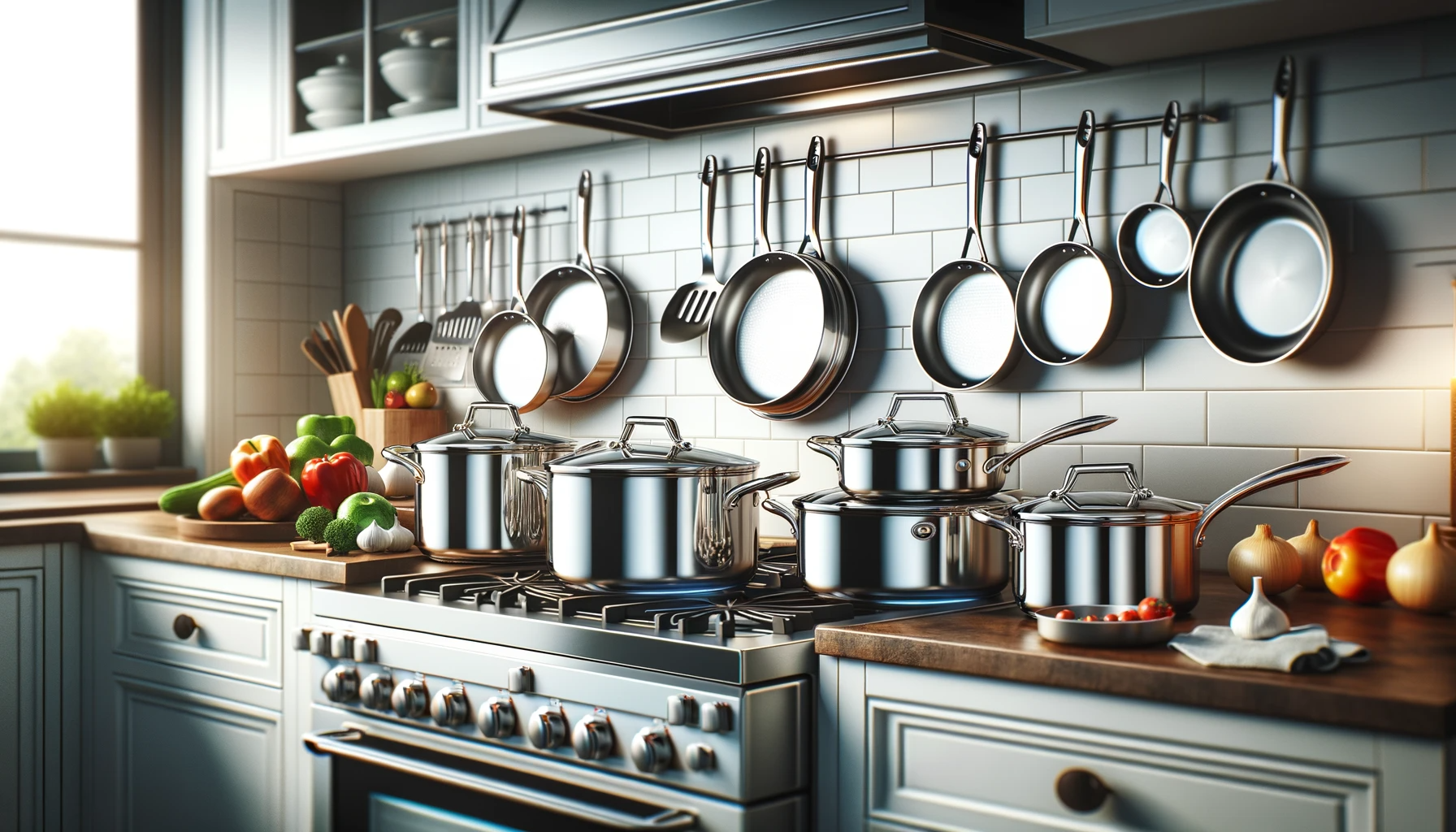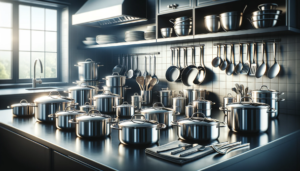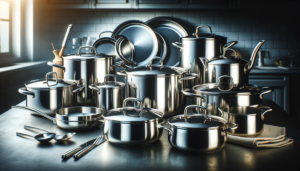With stainless steel’s durability, is Calphalon’s cookware formulation still safe for meal prep day after day?
Yes, Calphalon pans and pots meet rigorous safety standards through innovative design features that enhance stainless steel’s natural protective properties during all kinds of stove cooking.
Let’s examine what makes quality stainless suitable and non-reactive for cookware to see how Calphalon built upon its inherent advantages.
Is Calphalon Stainless Steel Cookware Safe?
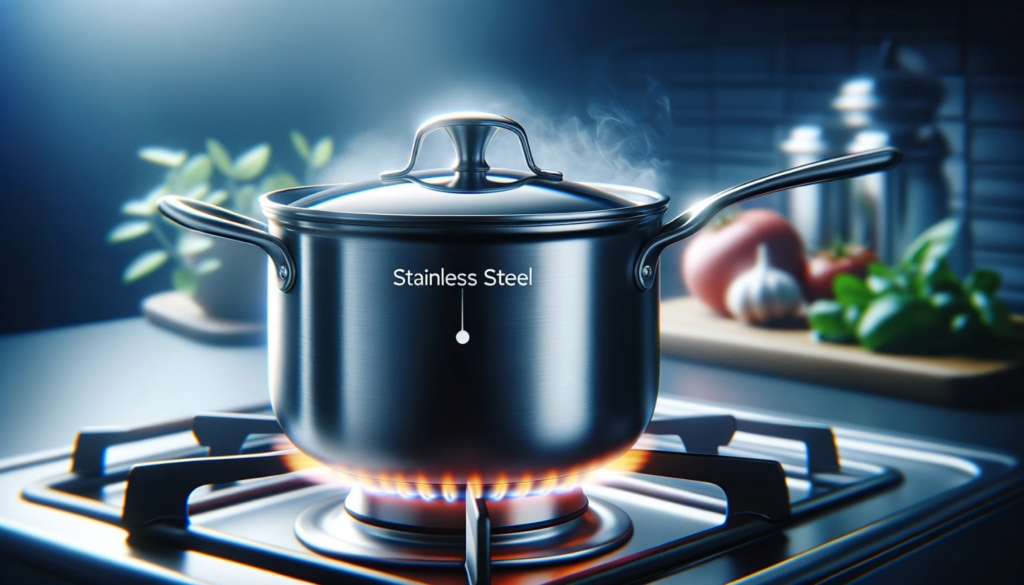
Yes, Calphalon stainless steel cookware is considered safe for typical home cooking uses based on extensive independent laboratory testing and real-world customer reviews over decades of use.
Calphalon pans and pots meet FDA and EU safety guidelines for metal cookware.
Their three-layer bonded construction locks in aluminum between durable stainless steel layers that resist corrosion, warping, chemical leaching, scratching, and overheating damage during all conventional stovetop cooking techniques.
While no cookware is completely impervious to damage over time, Calphalon ranks among the safest stainless steel offerings for consumers prioritizing chemistry inertness.
Below we will explore more deeply the properties that make quality stainless steel suitable and reliable for non-reactive cooking use along with care tips for maintaining long-term safety.
What Makes Stainless Steel Safe for Cooking

Stainless steel itself is made from iron mixed with elements like chromium, nickel, carbon, and others to create a corrosion-resistant metal alloy.
On its own, stainless steel is considered completely non-toxic and inert, meaning it does not react chemically with food ingredients during the cooking process.
This makes it an ideal material for pots, pans, and other cookware that come in direct contact with foods at high temperatures.
However, most common grades of stainless steel contain some amount of nickel mixed into the alloy.
In large quantities, nickel can be harmful to human health.
This has raised occasional concerns over whether nickel can leach out of stainless steel cookware into food during cooking.
In acidic liquids and high heat, tiny amounts of nickel ions can migrate from stainless steel over time.
Fortunately, virtually all high-quality stainless steel cookware contains enough added chromium to prevent this nickel leaching during ordinary cooking tasks.
The greater the chromium content, the more corrosion resistant and “stainless” the steel becomes.
Chromium forms an invisible passive layer of chromium oxide on the surface of stainless steel cookware when exposed to oxygen.
This ultra-thin chromium oxide film acts as a protective barrier between the metal cookware and the food cooking inside it.
As long as this stable chromium oxide layer remains intact, it prevents nickel or any other metals in the alloy from dissolving into food.
Quality stainless steel contains sufficient chromium levels (often 18% or more) to maintain this protective barrier during normal usage spanning many years.
Therefore, while stainless steel contains trace levels of nickel, the chromium in high-grade stainless formulations creates a barrier that makes it safely non-reactive for cooking applications.
As long as the surface layer remains undamaged, quality stainless steel does not impart any metallic taste or leach hazardous chemicals into food.
This makes it far safer for cooking than reactive metals like raw cast iron or copper.
Provided high enough chromium levels in its alloy, stainless steel is considered one of the most hygienic and inert metals usable for cookware.
Tests Show Calphalon Cookware is Safe

Extensive laboratory testing by independent organizations has consistently found Calphalon stainless steel cookware to be safe for typical home cooking uses.
Testing has shown no issues with chemical leaching from Calphalon pots or pans into food under normal culinary practices using metal utensils, high heat, and various cooking liquids.
Both the base metal layer and interior cooking surface in Calphalon’s stainless steel cookware have been certified safe for contact with all types of foods by respected bodies.
For example, Calphalon’s three-layer stainless steel construction meets safety non-stick guidelines set by the E.U.
Food Safety Commission as well as various U.S.
regulations enforced by the Food and Drug Adminstration (FDA).
The FDA has complex guidelines and protocols around acceptable small quantities of metals like nickel or chromium that could potentially migrate from cookware into food during heating.
Repeated testing has shown Calphalon’s cookware complies with these safety limits by significant margins, even after thousands of durability cycles.
The specific type of stainless steel used for Calphalon pans and pots is a high-quality food-grade 18/10 stainless.
The “18/10” labeling refers the exact percentages of chromium and nickel blended into the steel, with 18% minimum chromium content and 10% maximum nickel content.
This formulation has been extensively used, studied, and refined to offer an optimal balance of corrosion resistance, durability, conductivity, and safety for cooking applications.
18/10 stainless has been the standard for commercial kitchens and demanding restaurant uses for decades.
In addition to its high-grade stainless steel composition, Calphalon adds a thermally responsive aluminum core layer sandwiched between exterior and interior stainless layers.
This tri-ply bonded construction effectively marries the cooking benefits of aluminum with the durability, cleanability, and inert safety of stainless steel.
The aluminum core allows for fast, even heating across pan surfaces so foods cook thoroughly without hot spots.
The durable 18/10 stainless steel layers enveloping the aluminum core resist corrosion, metal leaching, warping, denting, and other damage during all manners of stovetop cooking.
Independent testing shows that even after thousands of test cycles, this metal bonding process maintains its integrity with no separation between layers that could impact safety.
Safety Tips for Using Calphalon Pans
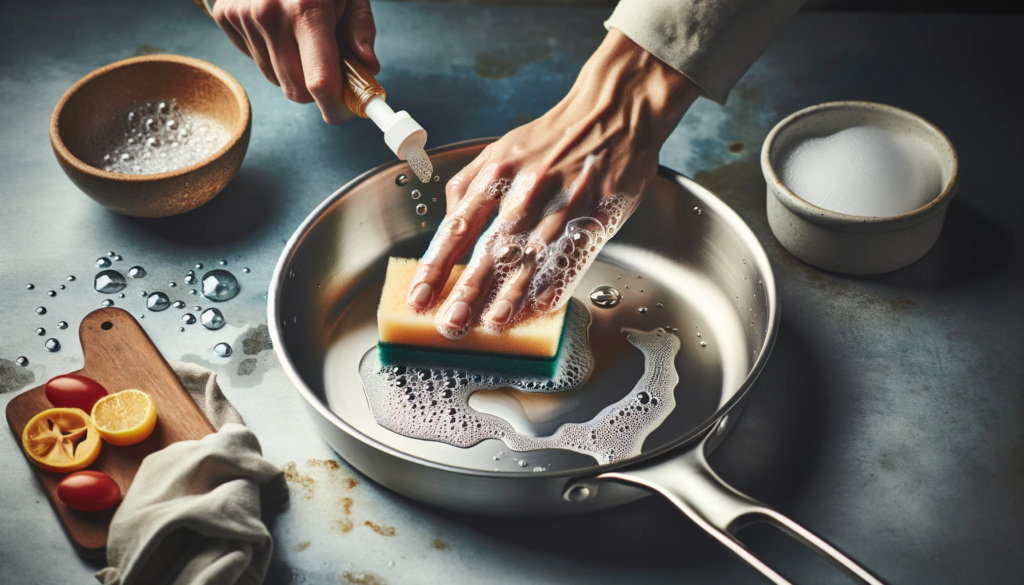
While tests have definitively proven Calphalon stainless steel cookware safe for typical in-home cooking tasks, there are still some general safety tips consumers should keep in mind:
Do not simmer or boil highly acidic foods for overly long periods in stainless steel pans.
Foods like tomatoes, citrus juices, wine, and vinegar are all highly acidic.
While harmless in normal cooking durations, extremely long-term simmering at high heat can lead to tiny amounts of metal ions leaching into these acidic liquids over time, even in high-quality stainless steel pans.
For recipes involving hours-long braising, simmering, or boiling of acidic ingredients, materials like enameled cast iron or ceramic may be safer options to consider.
Avoid severely overheating empty stainless pans for long stretches of time.
Metal cookware is designed to transfer heat from burners into food contents, then distribute it evenly across pan surfaces.
When pans are empty, there is potential to create localized overheating hot spots if dry-firing too long without food inside to absorb and diffuse the heat.
Excessive, prolonged heating of empty pans can degrade non-stick finishes and in stainless steel specifically, it may eventually breakdown the protective chromium oxide barrier layer that prevents metal leaching under normal conditions.
Pre-heating pans with a bit of oil or other cooking fat before adding food is fine and beneficial.
Just don’t leave high-quality stainless pans empty over maximum flame too long.
Do not use highly abrasive cleaners or scouring pads to clean the inside cooking surface of stainless pans.
The passive chromium oxide layer on quality stainless steel prevents reactivity with food.
But heavy scrubbing over many years can gradually erode this protective top layer.
For tough, cooked-on spills or stains, non-scratch cleaning methods like using salt as an abrasive, solution soaking, or easy-release nylon scrubbers are gentler options long-term.
If stainless steel pans eventually become visibly scratched on cooking surfaces after extremely heavy long-term use, it’s likely time to replace them with fresh unblemished cookware.
By properly caring for and avoiding misuse of stainless steel cookware, consumers can rely on their safety, durability, and integrity for many years of continued cooking use before replacement becomes necessary.
While no cookware product line is completely invulnerable to wear after decades of heavy daily use, avoiding carelessness allows the inherent protective qualities of quality stainless steel to minimize reactivity and metal leaching during the normal cooking process.
Customer Reviews Support Calphalon’s Reputation for Safety
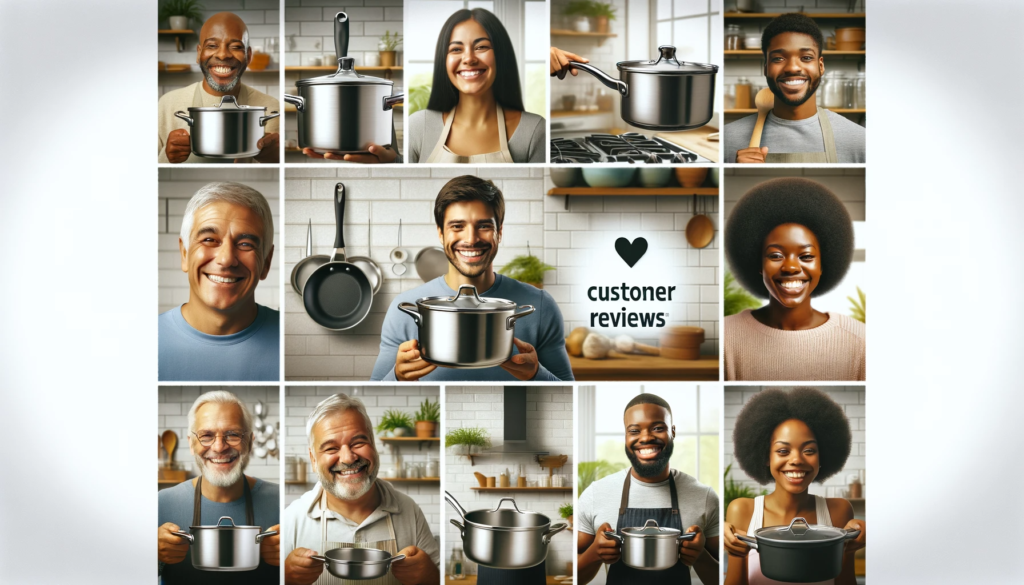
In addition to extensive independent laboratory testing and food safety certifications, decades of Calphalon customer reviews also support the real-world safety reputation of their stainless steel cookware products over many years of typical home kitchen usage and conditions.
As an early pioneer introducing three-layer bonded stainless steel cookware to residential consumers in the 1970s, Calphalon now has over 40 years of customer usage history to draw feedback from.
Numerous online reviews and customer testimonials confirm Calphalon stainless steel performs reliably and safely for meal preparation with no issues around leaching of chemicals or other serious safety concerns.
Complaints appearing over years of product use tend to focus on rare workmanship defects or eventual wear-related issues rather than fundamental safety flaws indicating stainless steel’s limitations.
Considering Calphalon’s leading global market position and multi-decade product history, the overall rate of safety complaints related to metal leaching or food reactivity with their stainless steel cookware lines is very minimal.
Isolated complaints surface occasionally, often around confusing other product lines like non-stick coatings with actual stainless models, or misinterpreting staining or stuck-on food debris for metal reactivity versus simple cleaning issues.
Legitimate health issue incidents traced to Calphalon stainless pans specifically are exceptionally rare over the entire history of these product lines and realistically would be nearly impossible to entirely eliminate at high production volume.
Compared against other prominent premium stainless steel cookware brands on the market, Calphalon compares very well in overall customer satisfaction and product safety judgement based on decades of user reports.
While no product line satisfies every individual user universally or remains free from isolated manufacturing defects, Calphalon stainless steel pans and pots rank excellent in reviews assessing their safety merits for home kitchen use based on real-world durability and heat stability during cooking tasks.
So together with formal laboratory testing results, decades of customer use history reinforce Calphalon’s hard-won reputation for manufacturing high-quality, safe stainless steel cookware products.
While no large cookware brand is immune to occasional faults, the overall lack of harmful chemical leaching effects or reactivity risks demonstrated collectively over many years gives evidence to support Calphalon as a prime stainless steel cookware choice for safety-minded consumers.
Those seeking reliable, durable, resilient and inert metal pots and pans can confidently utilize Calphalon’s stainless steel offerings with confidence based on their safety merits proven through both scientific method and home cooking trial.
Conclusion
In conclusion, extensive testing and decades of customer experiences support that Calphalon stainless steel cookware provides safe, reliable performance for all common home cooking tasks.
By following simple care and handling guidelines, consumers can enjoy inert non-reactive cooking durability from their Calphalon pots and pans.
